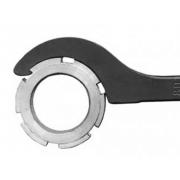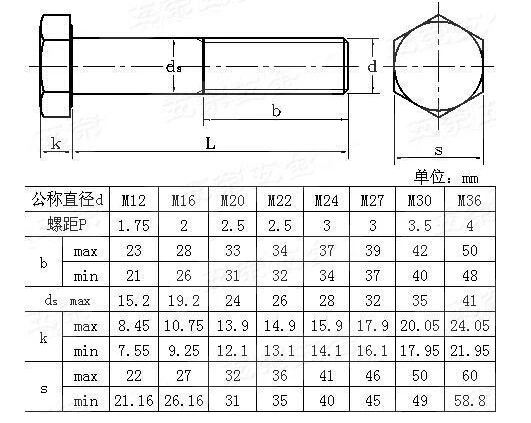
The SPANNER REPLACEMENT BIT works great. It works great with both sizes. It removes and tightens just like it’s supposed to. It doesn’t slip. The bit fits snugly into the tool perfectly. These replacement bits make it easy to replace a broken bit when you break one. I am very pleased with these replacement bits. 861SP-Series Spanner Bit (008610660) by Beta Tools®. This top-grade product is expertly made in compliance with stringent industry standards to offer a fusion of a well-balanced design and high level of.
From DT Online
Description

Spanner Slot Dimensions Guide

Spanners and Wrenches are tools designed to grip screwed together components (mainly nuts, bolts and pipe connectors) to tighten or loosen them.
Spanner Sizes

Modern spanner sizes refer to the distance across the flats of the hexagonal nut or bolt they would fit. A 17mm spanner therefore fits a nut 17mm across its flats and this is normally a nut to fit a 10mm diameter bolt (M10). Also, hexagonal key sizes are given as the distance across their flats and so a M10 Allen Screw for example would need a 8mm key to fit it. A table of common metric spanner and key sizes is shown opposite.
Some spanners may be marked AF. This also means Across Flats but it is an Imperial size marking, or more correctly a SAE marking, associated with UNC and UNF screw threads - e.g. a 1/2' AF spanner is 1/2' across and fits a 5/16' diameter UNF nut.
Similarly, some older equipment may be fitted with BSF or BSW nuts and bolts. The spanner sizes of these, by contrast, are marked with the diameter of the bolt they would fit - e.g. a 1/2' BSW spanner will fit a BSW nut and bolt of 1/2' thread diameter. A further complication is that BSW spanners will normally also fit a BSF nut one size larger - e.g. a 1/2' BSW spanner will also fit a 9/16' diameter BSF nut and bolt.
For British Association (BA) threads, as used on older electrical equipment, the marked size is the thread size - i.e. a 2BA spanner will fit a 2BA nut.
It is important to use a correct fitting spanner. Excess play may lead the spanner slipping causing personal injury or damage to the nut or bolt. A fixed size spanner would normally therefore be preferred whenever a suitable size is available. Adjustable Spanners could be used as a last resort but care must be taken to ensure they are used correctly such that most pressure is exerted against the fixed jaw as shown opposite when used with a R.H. thread (i.e. one that tightens clockwise).
Spanner Types
| Open Ended Spanner | These are one-piece spanners with a U-shaped opening that grips the two opposite faces of a hexagonal bolt or nut. They are usually double-ended, with a different-sized opening at each end slightly angled to allow a greater range of movement in enclosed spaces. |
| Ring Spanner | Also a one-piece spanner but with an enclosed opening that grips the faces of the bolt or nut making them less likely to slip - but this also limits their ability to access some nuts and bolts. They are usually double-ended, with a different-sized opening at each end and often with offset handles to improve access to the nut or bolt. |
| Combination Spanner | A combination spanner usually has an Open-ended Spanner at one end and a Ring Spanner of the same size at the other. Other combinations are also available. |
| Socket Set | Sockets are often made from Chrome Vanadium Steel and can apply much more torque and control than open ended spanners. Sets may contain as few as 10 or 12 different sizes but there can be 100's in the most comprehensive sets. Most sets contain sockets to fit both Metric sizes and also their SAE equivalents (SAE is similar to the UK Imperial sizes and sockets are marked as 1/2', 3/4' etc.). Sets usually contain, a Ratchet Socket Wrench and may also include: Extension Bars, Universal Joint, Spinner Handle and Adaptors if different size drives are used (drives are standardised at the SAE sizes of 1/4', 3/8', 1/2', 3/4' - but 1/2' drives are the most common for professional use). Shallow Sockets are the type most commonly found in socket sets but Deep Sockets are available for specific jobs if needed. |
Spanner Slot Size
Special Purpose Spanners
| Torque Wrench | A socket wrench drive tool that is employed to impart a precise amount of torque to a fastener, essential in many cases during the assembly of precision mechanisms or where it is important to ensure a series of threads are tightened evenly (e.g. car engine cylinder head screws) |
| Ratchet Spanner | Very useful for undoing nuts or bolts in inaccessible positions when there is a long thread which is too tight to undo with fingers. |
| Box Spanner | Also called Tube Spanners and could be regarded as the forerunner of the Socket Set but they are thinner and longer which makes them still useful to access fixings in a deep or narrow holes for example. They light weight makes them useful in portable tool kits. |
| Allen Keys | Used to turn screw or bolt heads designed with a hexagonal socket, they are commonly available as a simple L-shaped length of hexagonal wire stock but there are also versions with plastic T-shaped handles. |
| Magneto Spanner | Set of small pocket spanners were produced for the motorcyclist to repair their bike out on the road. They were usually in B.A. sizes and often included a Feeler Gauge to set ignition points. |
| 'C' Spanner and Pin Spanner | Wrenches with one or several pins or hooks, designed to drive threaded collars and retainer rings etc. |
| Bike Spanner | Such spanners, stamped out of sheet, are cheap to produce and so tend to come as accessories supplied with a product. |
| Plumbers' Basin Wrench | Designed for working in confined spaces such as under a sink and used by plumbers to tighten tap connections for example. They fit only the one or two sizes used for tap connections and a self-tightening version is available. |
DT Online Buyers' Guide
Adjustable Spanners and Wrenches
| Adjustable Spanner | Included here are those adjustables with jaws that remain parallel and are mainly therefore intended for use with nuts and bolts. The jaws of most modern adjustables are set at an a angle relative to the tool's handle to facilitate use in close quarters but not so on the older Monkey Wrench. The modern Adjustable Spanner was patented by Johan Petter Johansson in 1891. |
| Pipe Wrench | These are taken to be adjustables with self-tightening, often hardened, and serrated jaws that securely grip soft iron pipe and pipe fittings. They include Footprints(invented by Footprint's founder Thomas R Ellin in 1875) and Stillsons(named after the original patent holder's brand name). |
| Chain Wrench or Strap Wrench | A self-tightening wrench with either a chain or strap of metal, leather, or rubber attached to a handle, used to grip and turn smooth cylindrical objects (such as car engine oil filters). Strap Wrenches rely on Friction to grip smooth objects : Chain Wrenches can also positively grip Sprockets. |

See also Multi-Grip Pliers and Vice-Grip Pliers